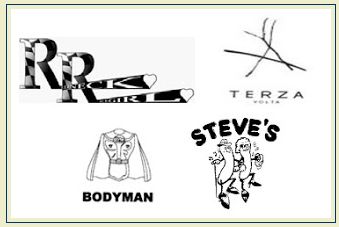The USPTO refused registration of the mark INCOGNITO for "footwear; footwear for men; footwear for women; shoes; shoes for men and women," finding it likely to cause confusion with the registered mark STS INCOGNITO & Wolf Design, shown below, for "hats; hooded sweatshirts; jackets; shirts; t-shirts." The goods are surely related, but are the marks close enough to cause confusion? How do you think this came out? In re Primeway International LLC, Serial No. 87059786 (January 9, 2019) [not precedential] (Opinion by Judge Frances Wolfson).

The Board found the wolf design (a wolf in sheep's clothing making a menacing expression) and the letters STS to be the "most visually prominent feature" of the cited mark. "The wolf design and letters STS immediately draw one's attention and engage the viewer before he or she may notice the smaller word 'incognito' in quotation marks below the picture of the wolf." In this regard, the Board pointed to four oft-cited cases: In re Covalinski, In re White Rock Distilleries, Inc., Parfums de Coeur Ltd. v. Lazarus, and Steve's Ice Cream v. Steve's Famous Hot Dogs, in all of which a word mark and a word+design mark were found not confusable because the design portion was the "most visually prominent feature."

The examining attorney argued that the design portion of the cited mark merely emphasizes the word INCOGNITO, since the wolf has disguised itself as a sheep. The Board disagreed. "The phrase 'wolf in sheep's clothing' refers to a threat that may appear to be benign, and the term 'incognito,' defined as 'with one's identity concealed,' does not imply anything about whether the entity concealing its identity is a threat."
The Board also rejected the arguments that consumers are less likely to remember strings of letters than real words and would tend to shorten the cited mark to INCOGNITO. "Here, to the extent that consumers would shorten Registrant's mark, they are at least as likely to recall STS as they are to recall 'INCOGNITO' because of the prominence of STS relative to 'INCOGNITO,' and because STS appears first when reading the mark, as would be usual, from left to right."
The Board concluded that the marks are not similar in meaning or commercial impression, and only somewhat similar in appearance and pronunciation. This factor "weighs heavily in applicant's favor." Indeed, the Board concluded that it was dispositive.
The Board also considered the relatedness of the goods and their channels of trade and likely consumers. To show relatedness, the examining attorney relied on webpages from several retailers, but the Board found this evidence not to be very strong.
All of the websites offer clothing and footwear on different web pages. A consumer searching for shoes on the Target website will not be exposed to clothing because the web pages do not include any links from clothing to footwear or vice versa or images of other goods. Likewise, consumers searching on the Nike or Adidas websites for shoes or for clothing may not be aware that each offers both items, because not all of the pages include tabs that link to both clothing and footwear.
The Board found that the "similarity of the goods factor" weighs only slightly in favor of a finding of likelihood of confusion.
The relevant purchasers of the involved goods comprise the general public. The only evidence as to channels of trade was the webpage evidence. However, "[i]nternet evidence alone is insufficient to prove that the goods may be encountered in overlapping channels of trade by the same classes of consumers." See In re St. Helena Hosp., 113 USPQ2d 1082, 1087-88 (Fed. Cir. 2014). The Board found this factor to be neutral.
As indicated, the Board found the first du Pont factor to be dispositive, and so it reversed the Section 2(d) refusal.
The content of this article is intended to provide a general guide to the subject matter. Specialist advice should be sought about your specific circumstances.
